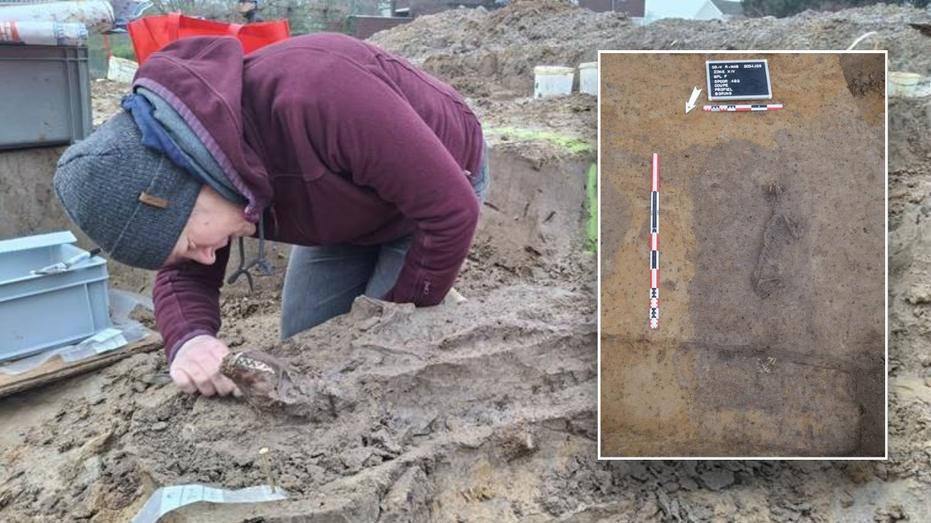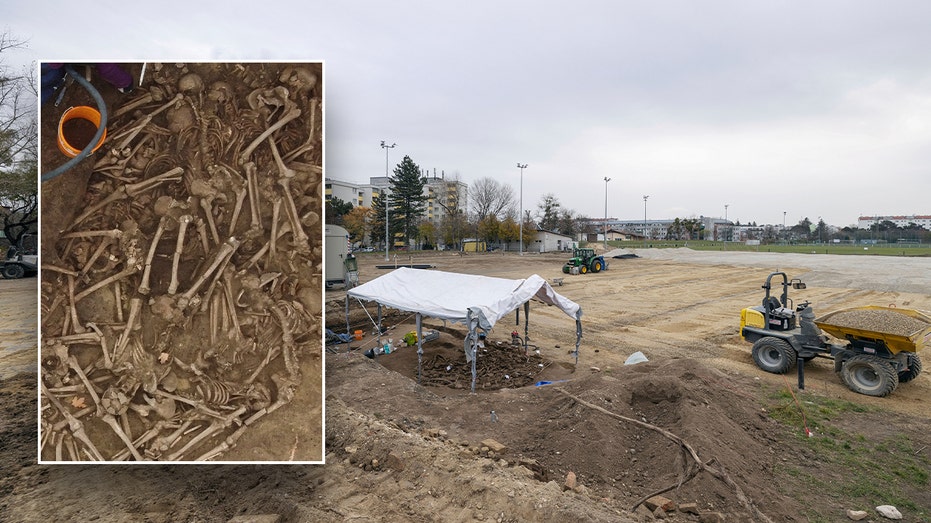- by foxnews
- 08 Apr 2025
Ancient settlement reveals remains of 1,800-year-old dog, baffling experts: 'Preserved quite well'
Archaeologists have recently unearthed the remarkably well-preserved remains of a dog from ancient Rome, shedding light on the widespread practice of ritual sacrifice in antiquity.

Archaeologists recently uncovered the remains of a remarkably well-preserved dog from ancient Rome - and the discovery highlights the prevalence of ritual sacrifice in antiquity.
Archaeologist Arne Verbrugge of Flanders, Belgium, told Fox News Digital that the excavation took place at a former ancient Roman regional center, called a vicus, in the village of Velzeke.
Pictures show the dog's mouth largely intact; several teeth were retained, as well as its entire skeleton. The creature was found under a stone floor that aided its preservation, Verbrugge said.
He added, "Because the dog was buried under a foundation of highly calcareous sandstone, the remains are preserved quite well."
But it appears the recently found dog was actually sacrificed for a building, rather than a human - which is a rare find in Belgium.
"From [the Roman scholar] Varro's work 'De Re Rustica,' it appears that dogs were sometimes used in rituals to purify land and houses," Verbrugge said.
"For the building sacrifice of Velzeke, it is likely that before they wanted to erect the building, they first 'purified' the site."
He said that "a relationship with 'purification' also appears from the practice of sacrificing dogs (and other animals) at the festival of the Lupercalia in honor of Faunus - associated with fertility and purification - as mentioned by Plutarch."
The stone building that the dog was buried under likely had some important purpose, Verbrugge said.
This was the first building-related dog sacrifice found in Flanders, though similar instances have been discovered in France and the United Kingdom.
"It is possible that the building was larger, but the foundations are not well-preserved everywhere," Verbrugge said.
He also said, "The presence of a stone building indicates an important building on the site."
"Once the remains are washed, the bones themselves will be examined again," Verbrugge said.
"Perhaps certain things can still be deduced from this, such as cause of death, diseases, age, gender and the like. We cannot assign this animal to a specific 'breed,' as [creating] specific breeds is a fairly recent practice."
Archaeologists also found a number of other artifacts at the site - including the bones of a different dog, the remains of a young pig, around 33 intact drinking cups and a bronze bowl, though Verbrugge characterized those discoveries as settlement waste or litter rather than ritual offerings.
"It is striking that the pits often also contain slag or fragments of oven walls, indicating artisanal activities in the immediate vicinity. At one point, ritual or religious activities were carried out on part of the excavation site."
- by foxnews
- descember 09, 2016
Ancient settlement reveals remains of 1,800-year-old dog, baffling experts: 'Preserved quite well'
Archaeologists have recently unearthed the remarkably well-preserved remains of a dog from ancient Rome, shedding light on the widespread practice of ritual sacrifice in antiquity.
read more



